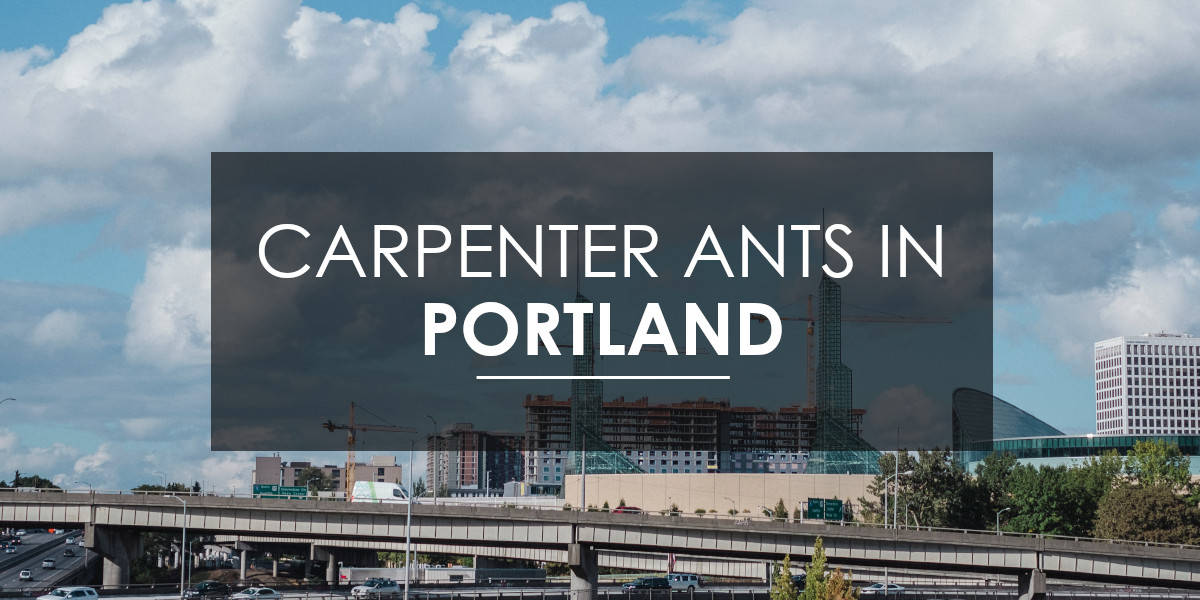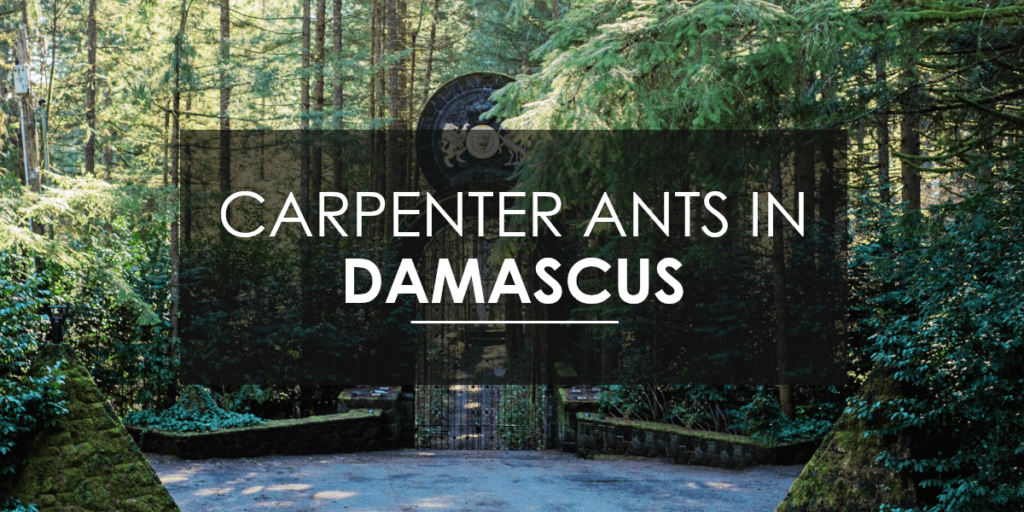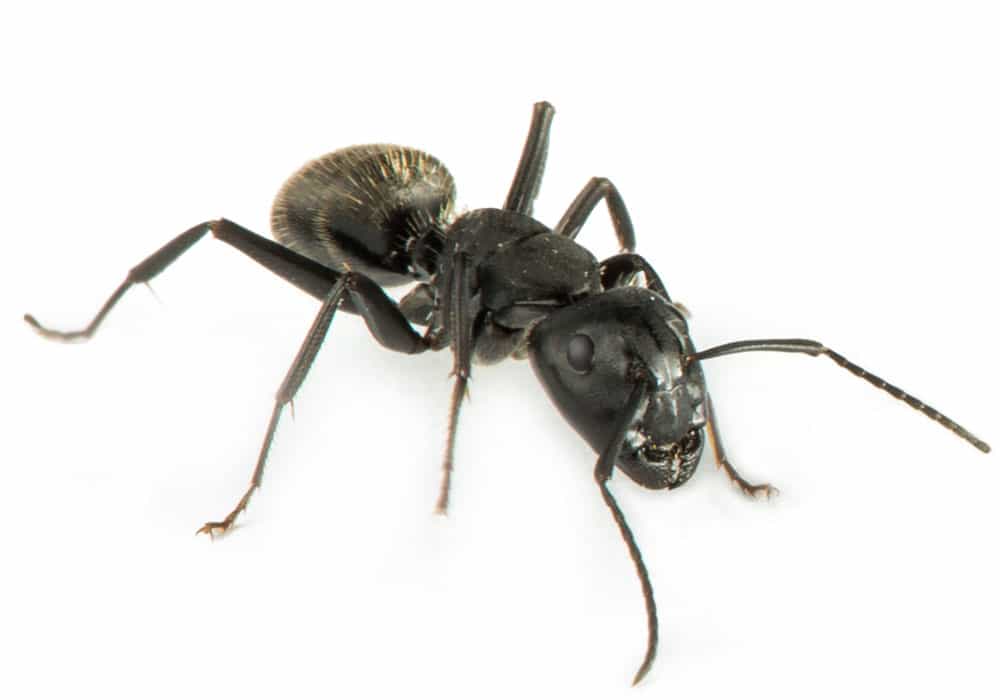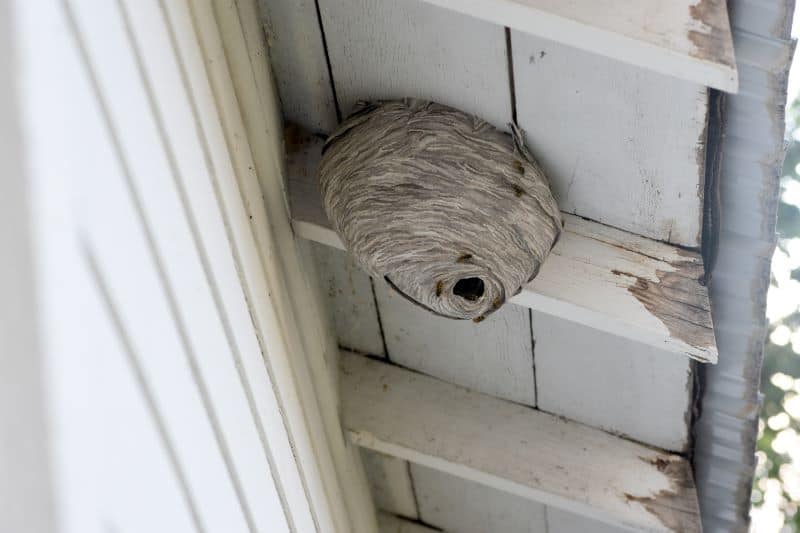Learn more about what carpenter ants are, the risks they pose, how you can exterminate them, and how professionals like the Aspen Pest Control team can help keep them gone for good!
Carpenter ants: get the right info for your unique needs.
It should come as no surprise that ants are one of the most common insects you’ll find in the Pacific Northwest. According to Washington State University, there may be upwards of 30,000 different species of ants in the world, all varying in size, shape, and habits. Due to this fact, ant infestations are some of the most common problems we help home and property owners face. Each species has its own unique set of challenges, which means that if you’re facing an infestation, you need a team by your side who has the right set of skills and experiences to effectively exterminate your pest problem. So when it comes to carpenter ants, you deserve to know what you’re dealing with.
What are carpenter ants?
You may have heard about carpenter ants in the past, but what exactly do you know about them? These insects are often confused with termites, but are distinctly different from them in both their behavior and the potential threat they pose to your household and lifestyle.
Carpenter ants are nocturnal, and their colonies consist of queens, workers, and males. Queens, naturally, are responsible for laying eggs and growing the colony. The males have a singular purpose: mating with the queens. Workers, like many other social colony insects, are responsible for much more, including the development of the nesting area and gathering food. Established colonies can feature more than 2,000 worker ants!
What do carpenter ants look like?
Carpenter ants come in a variety of sizes and colors, but most commonly you will see reddish- and black-hued carpenter ants in the greater Portland and Southwest Washington areas. They’ll vary in size, but will commonly measure to about one-quarter to one-half inch in length. The workers can be distinguished from the rest of the nest due to their size, as they are much larger. (Queens are even larger, but you’re less likely to see them.)
It is important to note that not all carpenter ants have wings, and not all winged ants are of the carpenter variety. The winged specimens are called alates, more commonly referred to as “swarmers”. These are the reproductive ants that are looking to expand the colony and may be a good indication that you are dealing with a substantial infestation.
What do carpenter ants eat?
Their diets consist largely of proteins. They are known to eat both living and dead insects, but also will eat the secretions of aphids and other small insects, called honeydew. This is the outdoor diet of the carpenter ant.
If carpenter ants make their way inside your Portland home, they will seek out sugary foods, fatty foods, and even meat proteins to keep themselves nourished. If they’ve made their way inside, obviously you have a problem. Unfortunately, the solution might be more complicated than you think based on the way many carpenter ants build and grow their colonies, which bring us to our next point…
How do carpenter ants build their nests?
Carpenter ants, as you might imagine, love to build their nests in wood, particularly wood that is softened by moisture or partially decayed. The actual sites within the wood where the nests are established are called “galleries.”
Contrary to popular assumptions, carpenter ants, unlike termites, don’t actually eat the wood that they use to build their nests. They burrow through it and discard the wood, leaving a tell-tale sawdust-like material called “frass” outside of the entry points of the tunnels that lead to the galleries.
It is not uncommon for carpenter ants colonies to branch out into multiple colonies. Queens are often territorial in nature, and the most dominant queen will lead the primary colony while other queens, workers, and males will operate what are called satellite colonies, connected to the main colony by an intricate series of tunnels. Interestingly, not all satellite colonies will necessarily have a queen. Some satellite colonies will be operated solely by workers.
Why are carpenter ants in my home?
There are a variety of factors that can contribute to them making their way into your home. The ants are looking for ideal conditions that include desirable building sights due to wood rot, accessibility of food and water, and shelter from the outdoor elements. All they need to get inside is an easily accessible entry point such as a window, poorly sealed door, broken brickwork, cracked foundation, or any other structural damage.
If a carpenter ant colony has made its way into your home, odds are that this in and of itself is a satellite colony. It is unlikely — but not impossible — that the parent colony has been established in your home.
Can carpenter ants cause physical harm or damage to my home?
The honest answer is maybe. Though they’re not prone to cause the same level of damage to a home that termites are responsible for, they can cause structural damage and, if left unchecked and given enough time, can cause extensive damage. Usually this is in the form of them taking advantage of a bad situation that is already occurring in your home, such as a leaky roof that is causing wood rot. They’re not responsible for the rot, but they’re responsible for whatever additional damage that can be caused because of the opportunity the rot presents with them chewing through to make their nests.
It is very, very uncommon for carpenter ants to bite or harm a human. In the instance that this does happen, it might cause a slight burning sensation. If you feel you’ve been bitten or harmed by an insect, seek appropriate medical attention. It’s likely not caused by a carpenter ant, but we want you happy and healthy nonetheless!
How can I get rid of carpenter ants?
First, we recommend you call the carpenter ant extermination experts at Aspen Pest Control! We are proud to be your first resource and line of defense against all things related to carpenter ants. It is our mission to provide home and property owners just like you with the information, service, and value you deserve for all of your pest control needs. We can provide you with an over-the-phone consultation of your potential infestation situation and schedule a visit to inspect and treat your home.
One of our pest control specialists — all licensed, bonded, insured, and local! — will take the time to listen to your experience, assess the situation with a keen eye, including those areas that others often miss, and then make an expert recommendation to you on the next steps for treatment. If you move forward with extermination services, we’ll apply child- and pet-friendly chemical treatments at the appropriate proportion and frequency dependent on the extent of your infestation.
How do I prevent a future carpenter ant infestation?
At the time of your extermination inspection, we will also recommend what other contributing factors need to be considered and taken care of in order to make our treatment effective and prevent future infestations from occurring. These might include fixing window or doors seals, leaks that are causing moisture or rot, or factors such as wood piles too close to the home or tree stumps in the yard that should be removed.
Taking care of these items, in combination with the right pest extermination plan, will help ensure that you’ll have a pest-free future, which is exactly what we both want!








